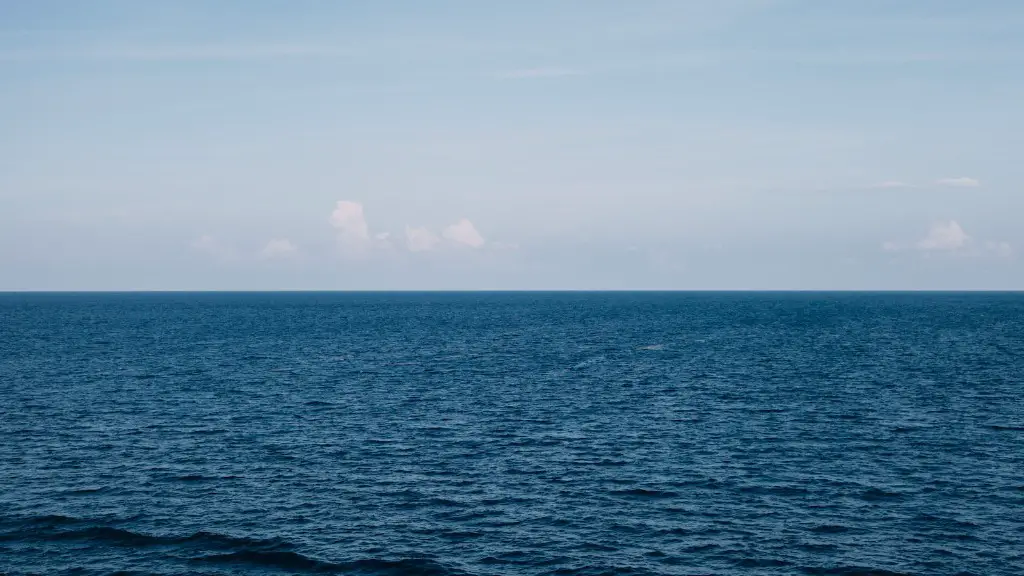Introduction
The South China Sea is one of the most important maritime regions in the world, containing several islands and islets with both natural and artificial structures. The South China Sea is surrounded by the Philippines, Vietnam, Malaysia, Brunei, and Taiwan, amongother nations and regions. It is a semi-enclosed sea with a total area of approximately 3.5 million square kilometers. It is an important commercial seaway and a vital shipping route for global trade. In recent years, it has become the center of a major territorial dispute involving several countries. This article seeks to provide an overview of the political complexities surrounding the South China Sea and discuss the various perspectives among the various stakeholders.
Background
The South China Sea has long been a subject of regional friction, with both historical and contemporary disputes over national sovereignty, maritime boundary delimitation and resources exploration. Aside from overlapping territorial claims, there is an ongoing maritime boundary dispute between several countries, including the People’s Republic of China (PRC), the Republic of China (ROC), the Philippines, Vietnam, and Malaysia. In addition, the sea contains valuable marine resources such as oil, gas, and fish, which makes it the center of various resource exploration activities. The sea also carries strategic significance, as it is home to numerous islands and islets of both natural and artificial characteristics, making it of great military importance.
Data and Perspectives
The People’s Republic of China, to which the disputed Spratly and Paracel Islands belong, has laid claim to all of the South China Sea, citing its alleged historical sovereignty over the area. To this end, the PRC has established a number of artificial islands in the sea, prompting the US to denounce what it sees as an unlawful act that goes against the compulsory maritime regulations laid out by the UN.
However, the PRC’s claims to the South China Sea have been challenged by several countries, particularly Vietnam and the Philippines. Vietnam argues that it has legally obtained ownership of some of the islands within the Paracel Islands and along the coast of Hainan Island. Meanwhile, the Philippines maintains that some of the islands within the Spratly Islands, such as Itu Aba, are considered part of its exclusive economic zone (EEZ) and that it has a right to exploit the resources within.
The views of international legal experts on this matter are divided. While some have argued that the PRC’s expansive claims should be rejected, due to their incompatibility with international law, others have argued that these claims should be respected, as they are based on ancient historical claims and not “forceful maneuvers”. Thus, the dispute remains unresolved, with the various parties involved continuing to press their respective claims.
Insights and Analysis
It can be argued that the resolution of the South China Sea dispute lies in increasing regional cooperation and dialogue. This could involve negotiations among the relevant countries to develop a mutually accepted solution or the establishment of an international mediation framework or tribunal to settle the claims. Such a framework could involve the UN Convention on the Law of the Sea (UNCLOS), which contains rules and regulations on maritime boundary demarcations.
Alternatively, the US could take a more proactive approach to regulating the dispute, for example, by conducting joint patrols and naval exercises in the area. This could both assure the territorial integrity of other countries and ensure the freedom of navigation in the region. It could also provide an opportunity to increase the presence of the US in the South China Sea, which could act as a deterrent against Chinese expansionism.
Overall, it is clear that the South China Sea dispute is complicated and involves many stakeholders. Although the dispute is unlikely to be resolved in the near future, continued dialogue and cooperation among the involved countries could go some way towards resolution.
Economic Implications
The South China Sea dispute also has wide-reaching economic implications. For example, the restriction of navigation rights in the South China Sea could lead to a decrease in international trade, as vessels may be re-routed through longer routes, resulting in both a per-ship increase in cost and an increase in wait times due to congested maritime shipping lanes. Additionally, oil and gas exploration activities in the South China Sea could be affected, as the dispute would make regular offshore production activities difficult, resulting in potential revenue losses for companies involved in this sector.
Furthermore, the disputes between China and some of its Southeast Asian neighbors over the South China Sea could potentially impact regional economic integration. For instance, the ongoing disputes could lead to disagreements in existing regional trade agreements and harm the overall economic relationship between the countries in the region.
Political Tensions
The South China Sea dispute is not only a legal, economic and maritime issue, but also a political one. In particular, it serves as a source of tension between China and some of its neighboring countries. The dispute is also seen to be an example of China’s growing assertiveness in the region, as it seeks to expand its influence, with countries like the Philippines countering this by building up alliances with other countries in the region, such as Japan.
Further complicating the matter is the presence of the US. Although the US has officially remained neutral in the dispute, it has begun increased patrols in the South China Sea, prompting China to condemn what it sees as US interference. This, in turn, has led to a further deterioration in the already tense relationship between the two countries, with both sides accusing each other of engaging in unilateral actions.
International Reactions
The South China Sea dispute has also sparked reactions from countries outside the region. For instance, several Western countries have voiced their opposition to China’s activities in the region, while other countries, such as India and Japan, have increased their presence in the region in an apparent effort to balance against Chinese influence.
Moreover, other countries have also initiated, or are looking to initiate, diplomatic efforts to resolve the issue, with Singapore and Indonesia leading the way in this regard. These countries have sought to foster dialogue between the countries involved in the dispute and lay the groundwork for potential resolution of the issue.
Environmental Implications
The environmental impact of the South China Sea dispute is also a cause for concern. With increased military activity in the area, there is a risk of ecological damage, such as pollution from oil and gas exploration or chemical dispersants used during naval exercises. Furthermore, the artificial islands created by China have destroyed vital habitats, such as coral reefs, which could have an adverse effect on ocean ecosystems.
In addition, the dispute could potentially worsen the problem of illegal fishing, as the lack of legal clarity over maritime boundaries makes it difficult to enforce regulations on fishing activities. This could lead to overfishing in the region, with the potential to destroy fish populations and damage the marine environment.
Conclusion
The South China Sea is a highly contested maritime region, with several countries vying for control over the area. With potential for both economic and environmental damage, it is essential that the issue be resolved as soon as possible. This can only be achieved by increasing regional cooperation and dialogue, as well as greater international interventions from countries outside the region. Only then can the dispute be resolved and the security and stability of the South China Sea be ensured.


